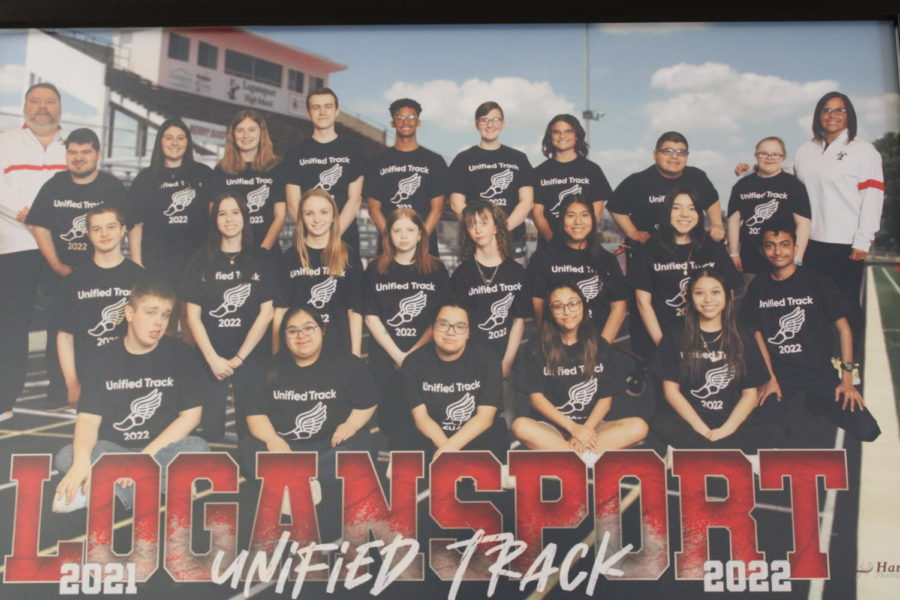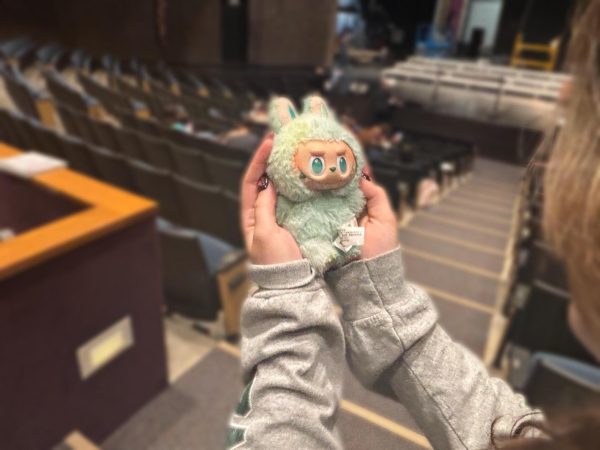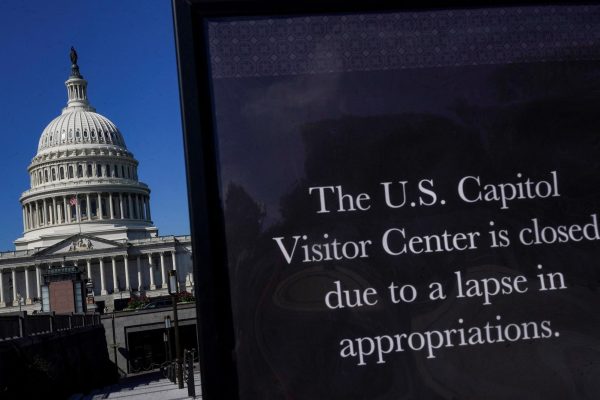Special Education Students Deserve More Representation and Awareness
Every year during the spring, Logansport participates in Unified Track. Unified track is a great opportunity to get special needs students and general education students together.
Growing up, I have been fortunate to get a more first-handed understanding of special needs students since I have a younger sister that has cerebral palsy. Although she is nonverbal, she has had many people advocate for her all throughout her life. However, many of these students do not have a person to advocate for them. Many changes still need to be made.
Throughout Logansport, there are many students with special needs. Special needs can be described as learning differences, mental health issues, or even specific physical or developmental disabilities.
For starters, we need to change the way we talk about these students. I have heard comments about special needs students by people throughout the school, some of which are negative. It is important that adults, parents, and staff, train all students on how to treat and understand special needs students.
“I can remember when one of my kids was in elementary school, and she was out playing at recess and the special needs kids came out to play,” parent Susie Langley said. “One of the kids in her class said ‘look at all those kids, they must have been in some kind of explosion.’ He was referring to all the kids in wheelchairs, but I think innocently he had never been exposed to any children that were different or had such severe disabilities.”
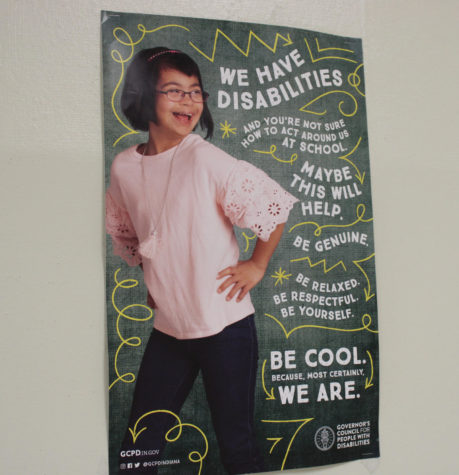
Many children are often confused and don’t know what to think when they are suddenly exposed to different types of people. Children often try to make sense of the world around them based on what they know. Whether that be from movies, TV, parent comments, etc. I think a way to help combat this stigma is to introduce the general population to students with special needs and different abilities at a younger age. Helping educate students about different disabilities will help them be more understanding, and as they get older, this could help with the negative comments that older students and even adults have made.
Angela Harmon, a history teacher at LHS, has a son who attends class in one of the special education classrooms. Her son Justin previously went to Columbia Elementary and was included in general classrooms often.
“Columbia Elementary was great,” Harmon said. “They included him in classes with his peers when they were doing things he could participate in, and it was very good for him. Throughout his life, kids, I did not know, would come up to us in public and talk to him. It made him happy, and also me, to see he was being accepted by his peers and they made a point to talk to him.”
This is a perfect example of introducing general education students to students in special education classrooms. Due to being exposed to kids with different abilities earlier in life, these kids that attended school with Justin were able to be accepting and treat him no differently.
“Getting the students out in the school community so they are seen and can interact with others would be good,” Harmon said. “That was so much easier to do in elementary school. He could go to a typical classroom and participate in some of the activities. I wish there was a class he could go to and interact with without disrupting the class.”
Along with introducing the general population to the special needs students at a younger age, I think continuing this even in the older grades would be very beneficial.
“I do feel as if there could be more inclusion within the mainstream classrooms. However, there would need to be considerably more special education, instructional assistants/staff, in order to make this happen,” special education coordinator Kim McLochlin said.
Although I, along with many others wish there could be more inclusion within the mainstream classes, I do appreciate and want to acknowledge the efforts some staff and students have made to help the special education students feel more included.
“The Berry Buddies Club is great. The students who join do want to include the students with special needs in activities outside of the school,” McLochlin said. “We have taken some students to a football game. We are having a movie night at LHS and will be making cookies. We are going to go bowling this winter and to a few basketball games. I have two good senior girls who are heading this up. Lots of activities are in the works. It will grow each year, and I am hoping that I have someone next year to lead it.”
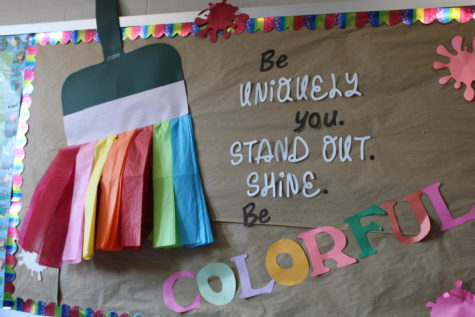
Although Berry Buddies is a great club for students, I believe that the school can do more activities as well and open these activities up to people not just in the club. Planning activities beyond the Berry Buddies will not only help more people get involved but will also help spread awareness of these students.
“Justin loves meeting new people and will talk to them about anything,” Harmon said. “I know Berry Buddies took some students to a football game, but my son was sick. I guess taking them to events is one way they could interact. Maybe a Riley Dance Marathon to raise money for Riley and also tell the stories of the special needs kids? Or, feature a different student each month and tell their story in the Magpie or Berry Broadcast?”
Along with Berry Buddies, some of the students are also taken out once a week somewhere in the community. Depending on the student’s needs and abilities, this is a great opportunity.
“One thing that I think the school does well as far as inclusion is that they take the kids out into the community once a week,” Langley said. “It is on Wednesdays, and Kaira does not go to school on Wednesdays, but she has participated before. I was told she seemed to enjoy going out. They make it a learning experience but it also gets them out into the community.”
Going along with more inclusion in the classroom brings up the point where many of the students in the special education rooms are not participating in elective classes. Elective classes are very important at the schools all throughout LCSC and where many students express themselves. This is important for all students, not just general education students.
“I wanted Kaira to be able to get the same things as my other kids as far as art, physical education, and music,” Langley said. “These are not always just given, and I didn’t realize that. Once I found out, I asked if she would be able to participate when she attended Fairview Elementary. Of course, PE is a lot different for her than it would be for a typical child, and so I knew she wouldn’t always be able to participate with the other kids, but she did have a form of physical education.”
Not giving these students the same opportunities as the general education students is very frustrating. Parents are often having to ask for special requests for their students just to get what other students get. Although this might not seem like a big deal, some students do not have an adult figure advocating for them and this can lead to them missing out on a lot of opportunities. It is important that the schools try to make a better effort on offering these activities and classes to all students.
“I do feel like the kids get overlooked at times because there were things that we had to ask for that the other kids were just automatically provided,” Langley said. “Parents didn’t have to ask for these things where I would have to with my special needs child.”
A parent that agrees with including the kids in these activities is Jennie Johnson. Johnson has two special needs students who attend Pioneer Jr. Sr. High School and Eastern Pulaski Elementary.
“Cris’ class this year has been integrated into the P.E. class,” Johnson said. “There are all ways of getting the kids out of the classroom, and more interaction with everyone in the school and community. Cris just loves to be around people in general. She is very social.”

Although some students are very social, some are the complete opposite and require different activities and needs during the day. Making sure to attain to all different students and give them exactly what they need will really make sure all the students succeed inside and outside of the classroom.
“Joe is the exact opposite,” Johnson said. “He is happy with one on one and would actually prefer to watch TV with someone sitting next to him. He is a homebody. Joe’s classroom this year is getting out of their room and interacting more with other students in the building. I love that for him, but it does worry me with his health being exposed to more germs.”
With every child being different and requiring different needs, this brings up the issue of therapy. Many students lack the opportunity to get physical or occupational therapy and implementing this into the school day would be very beneficial to so many special needs students. Many times this is the students’ only way to get the therapy that they need.
“I believe that my son’s needs have mostly been met,” Harmon said. “He has had some great teachers who do everything they can for the kids with the resources they have and with the state guidelines they are required to follow. The needs that have not been met go back to therapy. I believe that more PT and OT should have been provided. My son hasn’t had OT since elementary school, and I think that is one therapy he could definitely benefit from. He does still get speech.”
Understanding these students is very important to help them excel. This comes back to educating at a younger age and helping people be more understanding. When starting this learning opportunity at a young age, this will potentially carry with the person even into adulthood.
“Probably the first four or five years for Cris was a struggle with a new teacher every year and her personality not being understood. She can be loud, like to be ‘be in your face-pay attention to me,’ will smack/hit for that attention,” Johnson said. “Most would treat it as her being mean. Every day for years, we would get a note saying her behavior was awful and unacceptable. Eventually, she started getting teachers that understood her quirks. Then it was a big change. We no longer got a negative report every day. We started getting reports of her giggling, smilings, and laughing all day.”
Harmon also explains that many people may not understand these students, as well as they can.
“I know Justin really likes having the one-on-one attention,” Harmon said. “I also know that it may seem too disruptive, but they are just kids, living the lives they have been given, and they deserve to be recognized. They do not know how to react calmly. They get excited and they are loud, but they are not trying to be disruptive. They cannot help it.”
Another improvement, that could be made is making sure almost, if not everything, is accessible to these students. Frequently, accommodations need to be made and that shouldn’t be a bad thing. These students cannot help it and they shouldn’t be expected to find a way around the problem.
“Not everything is as accessible for the special needs kids at any of the schools. You will see there are areas that may be more difficult for them to be in or got to,” Langley said.
An example of this at our school is at McHale. Although McHale may seem accessible to all students with a ramp heading to the area through the high school. However, once you actually get to the building there is no way to get inside the performance area without having to take the stairs. This results in handicapped students having to take a more inconvenient route.
“For instance, if the kids go to a program at McHale, they have to go outside even in the winter to get to that area because the school does not have access in the building for them to get to the programs,” Langley said. “I’m sure that has to do with the age of the building, and if they end up ever having to repair that area, they would make it handicap accessible because of the laws in place for that. There’s a lot of things that people take for granted because they don’t have to think about accessibility or mobility.”
A way to bring awareness is incorporating awareness month throughout the school. The school celebrates Black History Month, Hispanic Heritage Month, Kindness Week, etc. However, not once was it mentioned last year that March is Developmental Disabilities Awareness Month. This would be a great opportunity to educate more students and include these students in activities for the month.
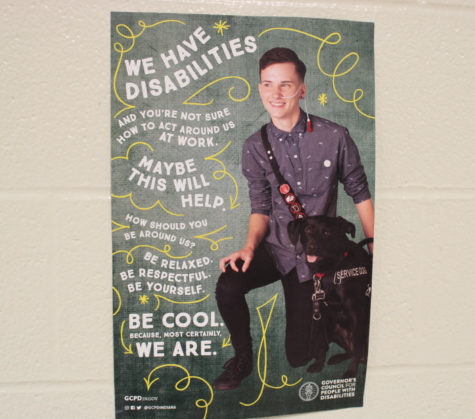
“I think there are other things that could be done like celebrate or talk about disabilities,” Langley said. “It used to upset me when I would see people stare, and sometimes I would stare back to show them how rude it was. Then, I realized they’re just curious, and I do think there’s a better way that people can go about things. Like coming up to the person and saying hi. There is so much awareness spread about everything else, but you hardly hear people celebrating or discussing disability awareness.”
Overall, I could go on about changes I would love to see. However, these are some of the most important to me: including the students and educating people more is very important along with making sure all the needs are met in the classroom and things are accessible to every child at school.
“I think there’s so much that could be done to close the gap between main steam and people with disabilities,” Langley said. “I know things have come a long way from 20 years ago, but there’s a long way to go. I have faith that in the years to come, there will be more opportunities and more resources available but just talking about it can make a difference.”
Your donation will support the student journalists of Logansport High School. Your contribution will allow us to purchase equipment and cover our annual website hosting costs.
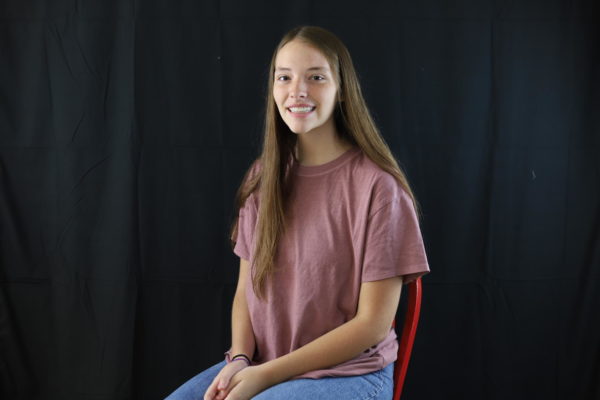
Kylee Langley is a senior and the Editor-in-Chief of Magpie. She has been on the staff for four years and has previously been the section editor for Arts...
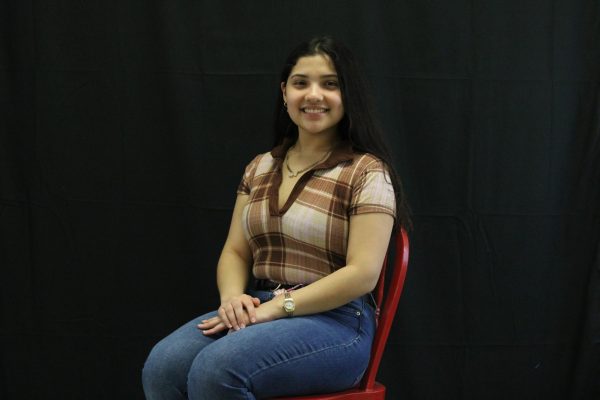
Senior Jennifer Anaya-Serrano has been a part of the Magpie staff since 2021, starting off as a photographer and bettering her way to become Photo Editor....

